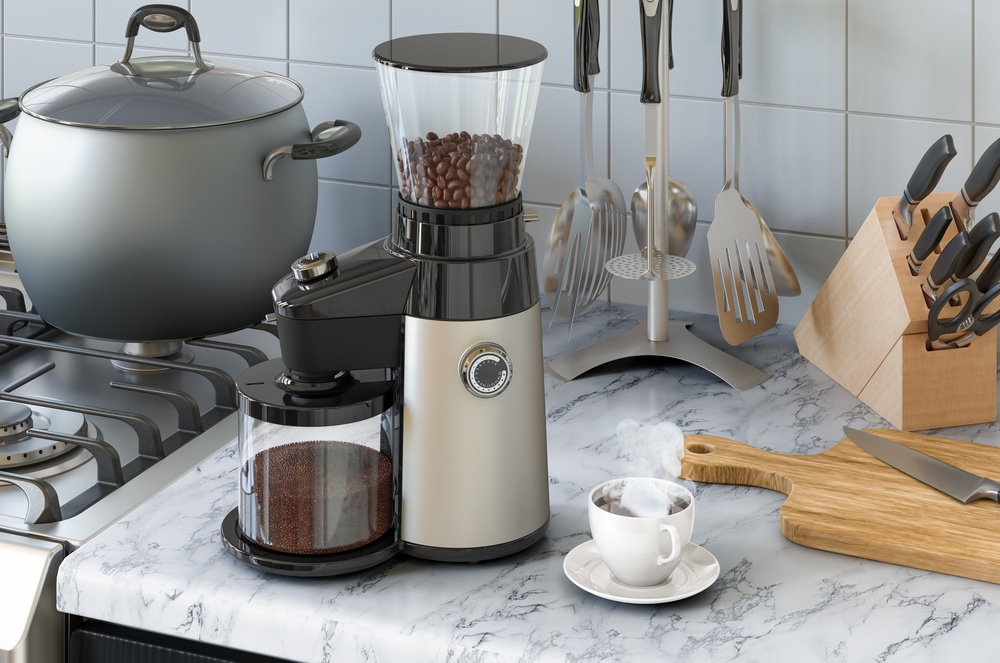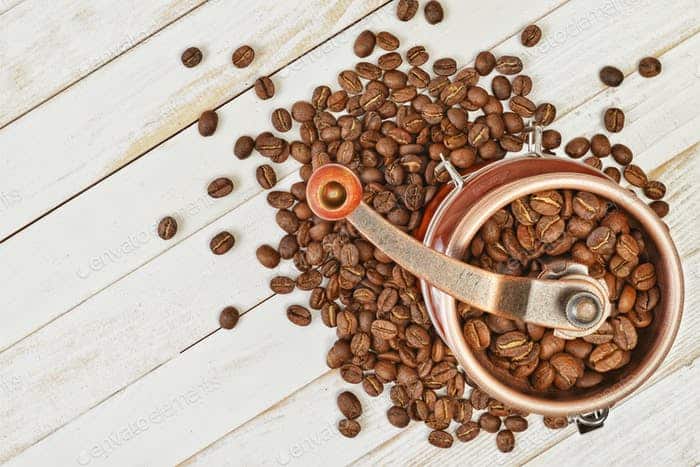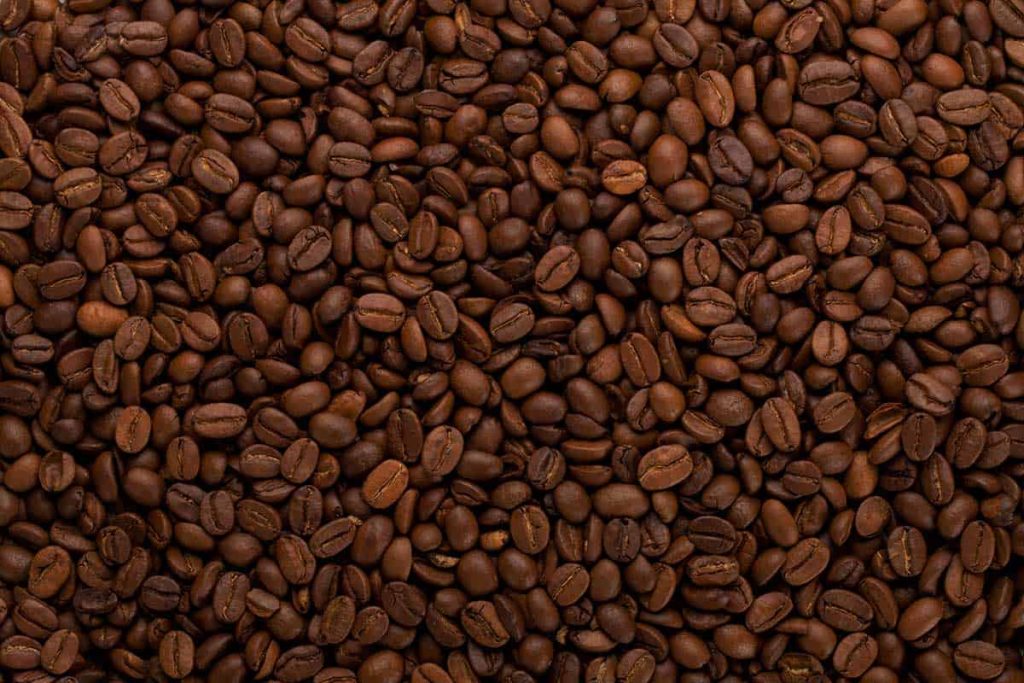How to Grind Espresso Beans: Our Expert Coffee Guide Tips

Brewing up your favorite espresso beans at home is an indescribable luxury that allows you to produce liquid gold with those rich and flavorful aromas anytime you wish. However, this reality can all be shattered if you don’t grind your beans correctly, so it becomes essential to learn how to grind espresso beans.
If you are new to the coffee game, you may not know how important the grinding of your coffee beans is. They add (or detract) those delicious flavors you’ll find in your brews. If you get the grind wrong, you will have a hard time enjoying your coffee.
Grinding isn’t the only important aspect for a good cup of espresso. The bean quality, water temperature, and a few other factors are also essential.
If you have chosen the right espresso beans and you have a top-quality espresso machine, your next step is to learn how to properly grind coffee beans for espresso.
This is where this article comes in to guide you through the process from choosing the right grinder right up to pouring those deep brown grounds into your espresso machine. So let’s get grinding!
The Grinder to Use: Go with Burr

First on your list before grinding up your beans for your favorite cup of espresso is determining which coffee grinder you should purchase. With so many options on the market, it is easy to find yourself confused and overwhelmed.
You might have been inundated with various types boasting to be the most efficient. However, the deeper you look into it and the more expert pages you visit, you will start to notice the grinder type that always seems to be the best option: the burr grinder.
A lot of people will probably start by looking at budget options, and this usually leads to a purchase of a blade grinder. Since blade grinders are more appealing in the price department, many new coffee enthusiasts lean toward this type to try out grinders.
This usually doesn’t go very well when the coffee doesn’t taste as great as the coffee from the barista down the road. Many new brewers will give up here thinking they don’t have the gift of great brewing.
Blade grinders tend to produce an inconsistent grind—more on that later—and are known to be a noisier alternative to the burr grinder. Speaking of noise, you also have the option to choose a manual or an electric grinder.
Electric or Manual?
The decision to go with a manual or electric grinder is a decision based on your preferences. You should take into consideration budget constraints, noise levels, time, and how much ground coffee you would like to produce on a regular basis.
If you don’t mind exerting some energy before brewing your coffee, then a manual grinder is a perfect budget-friendly option. A manual grinder is perfect if you only need to make a few cups of coffee for yourself and one or two other people because the grounds chamber is usually quite small.
If you want a fast and efficient grind and you don’t mind a bit of extra noise, then the electric grinder is your friend. An electric grinder can produce enough grounds to make anywhere from two to 18 cups of coffee with a push of a button. This option works well if you are regularly grinding coffee for lots of people (or yourself).

The Importance of Grind Size and Consistency
The grind size and consistency of your coffee grounds is a very important element in the brewing process. This is why coffee experts recommend grinding your beans at home rather than buying pre-ground beans.
Each type of brewing process requires a different grind size due to the extraction process where the grounds are combined with hot (or cold) water. Espresso requires a fine grind because the brewing process is relatively quick.
During the brewing process, pressurized hot water is pushed through the beans quite quickly, so it needs to extract flavors very fast.
When choosing a grinder, always make sure the grinder you have in mind is capable of grinding to the size and consistency you need. Remember, espresso requires very finely ground coffee beans.
Blade grinders have trouble producing fine grinds due to the haphazard spinning of the blades. The beans don’t all connect with the blades often enough, and this usually results in a coarse grind.
Blade grinders also have a tendency to produce inconsistent coffee grinds, which is a big mistake when brewing coffee. The hot water poured over the ground coffee starts to extract the flavors from the grounds.
If these grounds are uneven, the flavors will extract at different rates. If the extraction process goes on for too long, the smaller pieces will over-extract, and the larger pieces could under-extract. This uneven grind leads to a bitter, sour, or watery cup of coffee.
Burr grinders force all the beans through the mechanism and produce a consistent grind. This, in turn, lets the coffee all extract at the same rate. If your brewing times are correct, you’ll have rich and flavorful coffee.
Now, on to the good stuff: learning how to grind coffee beans for espresso.
How to Grind Coffee for Espresso Using an Electric Burr Grinder
If you are still a bit skeptical and want to try grinding beans before purchasing a grinder, you can follow this easy guide on how to grind beans at home without a grinder.
However, if you have purchased your burr grinder (as recommended) and are ready to grind up some coffee, it will only take a few steps.
Step 1: Prepare Your Beans
You should use dark roast beans, as they work best for espresso. Lightly roasted beans will come out quite sour when brewing using this process. Measure out the amount of beans you need to grind.
Step 2: Set Up Your Grinder
Plug it in and make sure all the parts are in place. Set the grind size and the grind amount correctly. You may have to refer to your grinder’s owner’s manual here as each grinder will be different.
Step 3: Test Grind with a Few Beans
If this is your first time using an espresso machine, start with a few beans at a time to get used to the settings. Double-check whether your grind size is right and if all the settings are correct.
Step 4: Get Grinding
Press that start button. Depending on your machine, you will most likely press the start button to set the grinding in motion. Let the grinder run its cycle after switching on, even if there seems to be more than enough grounds in the chamber. Your grinder knows best.
Step 5: Get Your Grounds Out
Scoop out the grounds after removing the grounds chamber and place them in your espresso machine according to the instructions. If you ground up too much coffee, store the leftovers in an airtight container and use them as soon as possible.
Espresso Grind FAQs
How fine should you grind coffee beans for espresso?
You need a very fine grind for brewing espresso. The process of brewing espresso is done by blasting hot water at a high pressure through your coffee grounds. This is quite a fast process, so there isn’t much time for the flavors to extract. The smaller grind size allows enough time for the flavors to seep into the water and then into your cup.
What bean roast should you use for espresso?
The best roast for an espresso is a dark roast. The dark roast requires a longer roasting time than a light roast, resulting in a smooth and almost acidic cup of coffee. If you attempt to use a light roast, your coffee will most likely end up being quite bitter when you brew it in an espresso machine. Check out our tutorial on roasting coffee at home.
Can I grind beans in a blender?
Some people may recommend using a blender to grind up your coffee beans. This will work the same way that a blade grinder works. You will get inconsistent, coarse grinds from this method.
When brewing espresso, you will need a consistent and fine grind if you want good-tasting coffee. In this case, a blender is not recommended for grinding.
Espresso Away!
Brewing up an espresso is a great way to enjoy a strong hit of caffeine full of rich flavors, as long as you take note of the bean quality, water quality, and the grind elements. Always ensure you get the grind right using a grinder that produces consistent grinds for your coffee.
These requirements are essential for brewing a quality espresso that tastes just like the barista’s down the road — or even better if your beans are fresher than theirs. Paying close attention to the grind consistency will help you take your brewing skills to the next level and truly enjoy the art of all things coffee.
With all this said, you should also make sure you have the right machine to brew your coffee. If you don’t already own one, head on over to check out our reviews for the best espresso machines.
Owen is a writer and editor at Caffe Streets who considers himself a coffee fanatic. He spends his time researching and testing different coffee beans and brewing methods and sharing what he learns with others.





